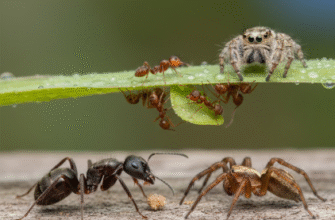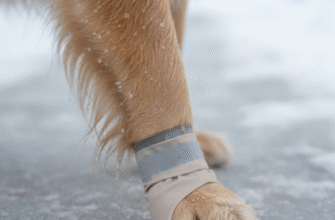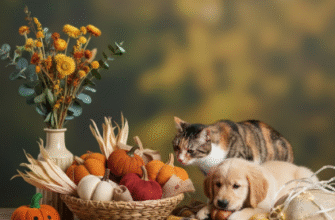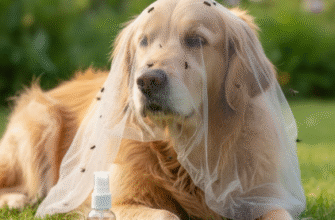Ah, spring! The birds are singing, the flowers are blooming, and the urge to get outside after a long winter is almost irresistible. Longer days and warmer temperatures mean more time spent hiking, gardening, playing in the park, or simply lounging in the backyard. But as nature awakens, so do some less welcome inhabitants – ticks. These tiny arachnids become active as soon as the weather warms up, often when temperatures consistently hit above freezing, making spring the prime time to establish a vigilant tick check routine.
Ignoring these critters isn’t really an option if you enjoy the outdoors. Ticks aren’t just annoying; they can be carriers of various diseases. While we won’t delve into specific illnesses here, the general knowledge that ticks can transmit pathogens is enough reason to take prevention and detection seriously. Establishing a routine early in the season helps make it a habit, significantly reducing the chances of a tick staying attached long enough to cause potential problems. Think of it like brushing your teeth – a simple, regular habit for health.
Why Spring Demands Extra Vigilance
Ticks go through different life stages – larva, nymph, and adult. The nymph stage, common in spring and early summer, is particularly concerning. Nymphs are incredibly small, about the size of a poppy seed, making them very difficult to spot. Despite their size, they are actively seeking hosts (including humans and pets) to feed on. Adult ticks are also active, but their larger size makes them somewhat easier to detect. Because nymphs are so tiny and prevalent during this season, a thorough check is more critical than ever.
Furthermore, our own behaviour changes in spring. We shed heavy winter layers for lighter clothing, exposing more skin. We eagerly venture into woods, tall grasses, and leafy areas where ticks love to hang out, waiting patiently on the tips of vegetation for a host to brush past. This combination of active, tiny ticks and increased human outdoor activity creates a perfect storm for tick encounters.
Developing Your Personal Tick Check Routine
Consistency is key. Make checking for ticks a non-negotiable part of your routine every single time you, your children, or your pets return from potentially tick-infested areas. This doesn’t just mean deep woods; ticks can be present in suburban yards, local parks, and even piles of leaf litter.
Step-by-Step Self-Check
Find a well-lit room, preferably with a full-length mirror and a hand mirror to see difficult areas.
- Start Low, Go High (or Vice Versa): Systematically check your entire body. Some prefer starting at the feet and working up, others head down. The important thing is not to miss anywhere.
- Focus on Creases and Warm Spots: Ticks love hiding in warm, moist, or hidden areas. Pay extra close attention to:
- Between the toes
- Behind the knees
- In the groin area
- Around the waistline (under belts or waistbands)
- In the armpits
- Inside the belly button
- Around the ears (behind and inside the outer ear)
- On the scalp and along the hairline
- Scalp Check: Run your fingers through your hair like you’re massaging your scalp, feeling for any small bumps. A fine-toothed comb can also help, especially with thick hair. Having someone else check your scalp and hairline is often more effective.
- Use Mirrors: Employ the hand mirror to check your back, buttocks, and the backs of your legs – areas difficult to see directly.
Checking Children
Children often play closer to the ground and may roll in grassy areas, increasing their exposure. Follow the same systematic approach as the self-check, paying meticulous attention to their scalp, hairline, behind the ears, and all the body folds mentioned above. Make it a game or a regular post-playtime ritual. Explain simply why you’re doing it – “We’re looking for tiny bugs that like to hide so we can take them off.”
Don’t Forget Your Furry Friends
Pets are prime targets for ticks. Check your dogs and outdoor cats daily, especially after they’ve been roaming outside.
- Feel, Then Look: Run your hands slowly over their entire body, feeling for small bumps. Part the fur to visually inspect any bumps you find, as small scabs or skin tags can feel similar.
- Key Pet Areas: Concentrate on areas like:
- Around the ears (inside and out)
- Around the eyelids
- Under the collar
- Between the toes
- Under the front legs (armpits)
- Between the back legs (groin area)
- Around the tail
- Consider Preventatives: Talk to your veterinarian about appropriate tick prevention products for your pets. There are various options available, and your vet can recommend the best fit based on your pet’s health, age, and lifestyle.
Where Ticks Hide Outdoors
Knowing where ticks commonly reside can help you be more cautious. They prefer humid, shaded environments and typically “quest” for hosts by climbing onto blades of grass or shrubs and waiting with their front legs outstretched. Common habitats include:
- Wooded areas and forest edges
- Tall grass and overgrown fields
- Leaf litter and brush piles
- Stone walls and woodpiles
- Areas around bird feeders or where deer and rodents frequent
When hiking, try to stay in the center of trails and avoid brushing against dense vegetation. In your yard, keep grass mown, remove leaf litter promptly, and consider creating a barrier of wood chips or gravel between lawn areas and wooded edges.
Simple Preventative Measures
Besides diligent checks, a few extra steps can reduce your risk:
- Clothing Choices: Wear light-colored clothing to make spotting ticks easier. Tuck your pants into your socks and your shirt into your pants when venturing into tick territory.
- Use Repellents (Carefully): Consider using EPA-registered insect repellents on exposed skin, following product instructions precisely. Repellents containing DEET or Picaridin are often suggested, but always read the label, especially when applying to children. Permethrin-treated clothing can also offer protection but should only be applied to clothing, not skin.
- Shower Power: Showering within two hours of coming indoors can help wash off unattached ticks and provides another opportunity for a tick check.
- Clothes in the Dryer: Tumble dry clothes on high heat for 10-15 minutes after coming inside, even before washing. The heat can kill ticks that might have hitched a ride on your clothing.
Important Reminder: Ticks can be surprisingly small, especially nymphs which are active in spring. A quick glance isn’t enough. Take your time during checks, use good lighting, and be thorough every single time you return from outdoors to minimize risks associated with tick bites.
Found a Tick? Stay Calm and Remove Promptly
If your check reveals a tick attached to the skin, the goal is to remove it as soon as possible. Use clean, fine-tipped tweezers.
- Grasp the tick as close to the skin’s surface as possible. Try to grab the head, not the body.
- Pull upward with steady, even pressure. Don’t twist or jerk the tick; this can cause the mouthparts to break off and remain in the skin. If this happens, try to remove the mouthparts with tweezers. If you can’t remove them easily, leave them alone and let the skin heal.
- After removing the tick, thoroughly clean the bite area and your hands with rubbing alcohol, an iodine scrub, or soap and water.
- Dispose of a live tick by submersing it in alcohol, placing it in a sealed bag/container, wrapping it tightly in tape, or flushing it down the toilet. Never crush a tick with your fingers.
It can be helpful to note the date you found the tick and where on the body it was located. While most tick bites don’t lead to illness, being aware allows you to monitor the site and your health afterwards. If you develop a rash or feel unwell in the days or weeks following a tick bite, consult a healthcare professional.
Make it Habit
Spring is glorious, a time for renewal and enjoying the natural world. By incorporating a simple tick check routine into your daily habits during tick season, you can continue to embrace outdoor activities with greater peace of mind. It takes only a few minutes, but this small investment in time is a powerful step in safeguarding your and your family’s well-being against these persistent springtime pests. Be aware, be thorough, and enjoy the season safely!








